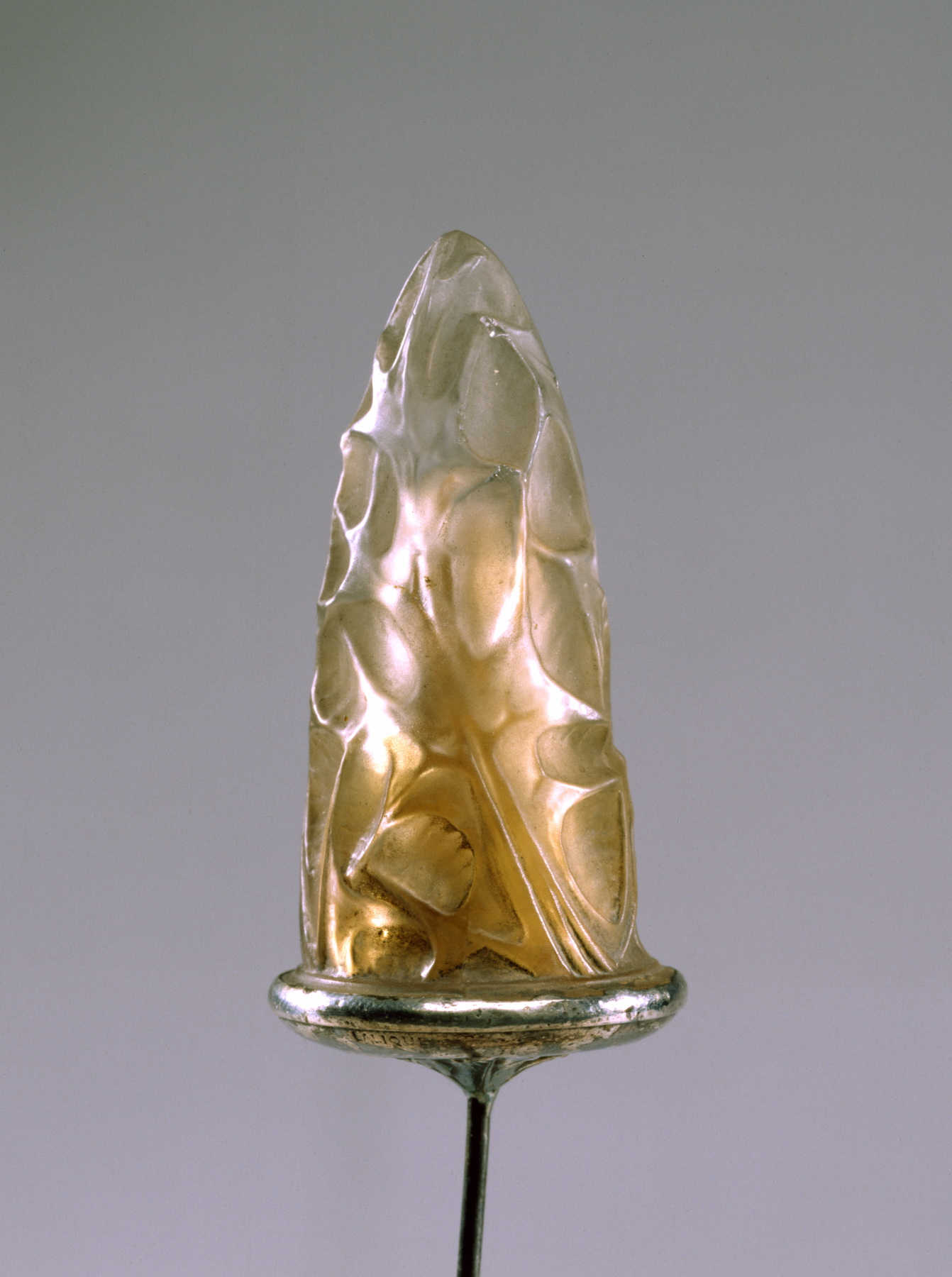Hat Pin with Scarabs
Before devoting himself to glass, Lalique was an important jewelry designer. Combining such materials as ivory, horn, glass, and semiprecious stones, all chosen for their visual appeal, with gold and diamonds, he created flamboyant masterpieces of Art Nouveau jewelry. In 1909, Lalique rented a glass factory at Combes-la-Ville, near Paris, where he made perfume bottles. The following year, he acquired another factory in Alsace, which he used for the mass-production of glass using a press-molding technique. Working in a balanced, highly stylized manner that anticipated the Art Deco movement of the 1920s, Lalique designed a diverse range of products that included car hood ornaments, lamps, bottles, vases, ashtrays, and room fittings, as well as jewelry.
Provenance
Provenance (from the French provenir, 'to come from/forth') is the chronology of the ownership, custody, or location of a historical object. Learn more about provenance at the Walters.
Morley, Bronxville [at the Convention Center Antiques Show, Baltimore]; Dr. and Mrs. Edward F. Lewison, Baltimore, August, 1989, by purchase; Walters Art Museum, 2002, by gift.
Exhibitions
| 1999 | Lalique from the Lewison Collection. The Washington County Museum, Hagerstown. |
Geographies
France, Paris (Place of Origin)
Measurements
9 in. (22.86 cm) (l.) approx.
Credit Line
Gift of Dr. and Mrs. Edward F. Lewison, 2002
Location in Museum
Not on view
Accession Number
In libraries, galleries, museums, and archives, an accession number is a unique identifier assigned to each object in the collection.
In libraries, galleries, museums, and archives, an accession number is a unique identifier assigned to each object in the collection.
47.729


